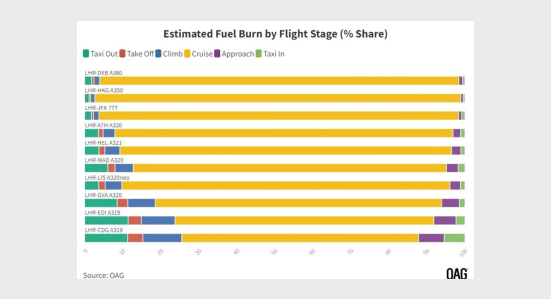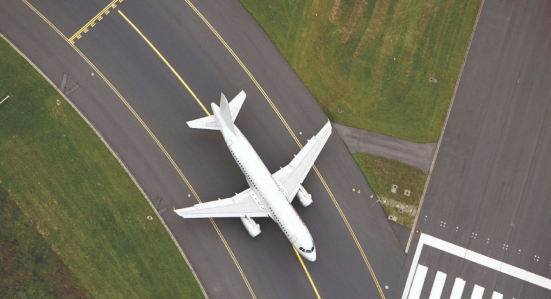
In this analysis, we use the model to take a look at a selection of flights for a specific day and shed some light on which elements of a flight burn the most fuel, Becca Rowland writes for OAG.
BOSTON – It may be some time since many of us have taken a commercial flight but we don’t forget that feeling of being pushed back into our seat as the pilot put the aircraft into full throttle as the aircraft started to accelerate along the runway. As the plane starts to lift we can believe the engines are working their hardest and burning the most fuel. While take-off may be the most intense point of a flight in terms of fuel consumption, is it right – as some of us have been led to believe – that this uses more fuel than any other part of the flight? Becca Rowland writes for OAG. Continue reading original article.
The Military & Aerospace Electronics take:
9 Feb. 2022 – OAG Labs utilized data from 10 flights that departed from London Heathrow Airport to a variety of destinations, including a short hop to Paris in an Airbus A319 and a long haul to Hong Kong in an A350. The other flights were to Athens (ATH), Dubai (DXB), Edinburgh (EDI), Geneva (GVA), Helsinki (HEL), Lisbon (LIS), Madrid (MAD) and New York (JFK).
“Total fuel burned is an important metric, but so too are those around efficiency,” Rowland writes. “Aircraft capacity, age and engine type all contribute significantly to relative fuel burn. In our example, the A380 used to fly to Dubai uses almost 14 liter of fuel per kilometer flown while the newer A350 to Hong Kong uses just 6.0, less than the A319 to Paris. Meanwhile the A321neo, one of the newest aircraft, uses an average of 2.7 liters of fuel per kilometer.”
OAG’s experiment used nine aircraft from Airbus and one 777 from Boeing and measured fuel burn in six segments: taxi out, take off, climb, cruise, approach, and taxi in.

In 2011, a team led by L-3 Communications demonstrated electric taxiing at Frankfurt Airport with a Lufthansa Airbus A320. In…
Read More
Carbon Brakes Captain Shem Malmquist The following information was adapted from an article on brake use by Capt. Simon, UAL…
Read More
14 CFR Part 39 [Docket No. FAA-2022-0160; Project Identifier AD-2022-00009-E] RIN 2120-AA64 Airworthiness Directives; CFM International, S.A. Turbofan Engines (summary)…
Read More
In this analysis, we use the model to take a look at a selection of flights for a specific day…
Read More
On average, a single-aisle jet burns more than 65 gallons of fuel while taxiing, which translates to almost $130 per…
Read More